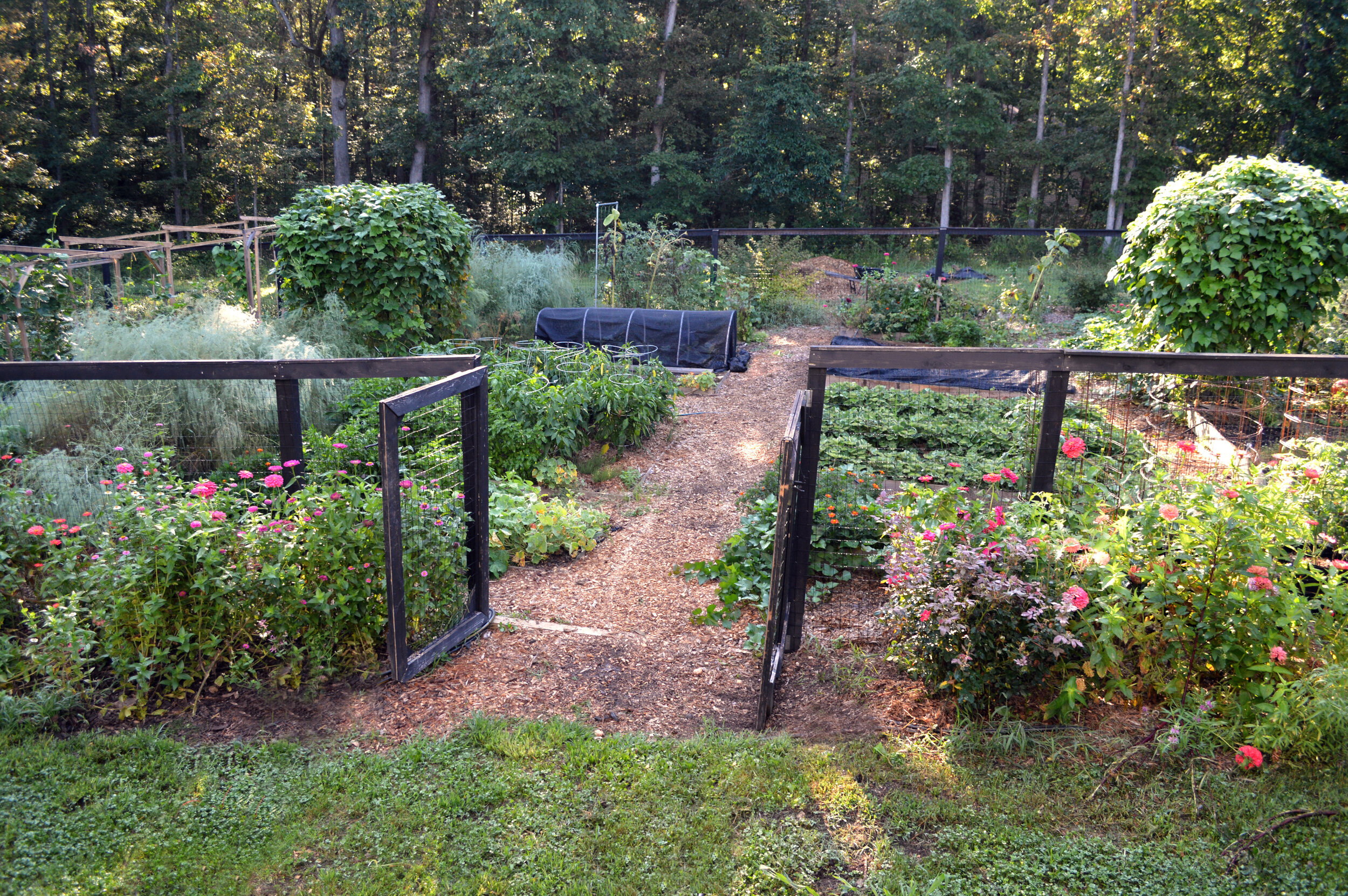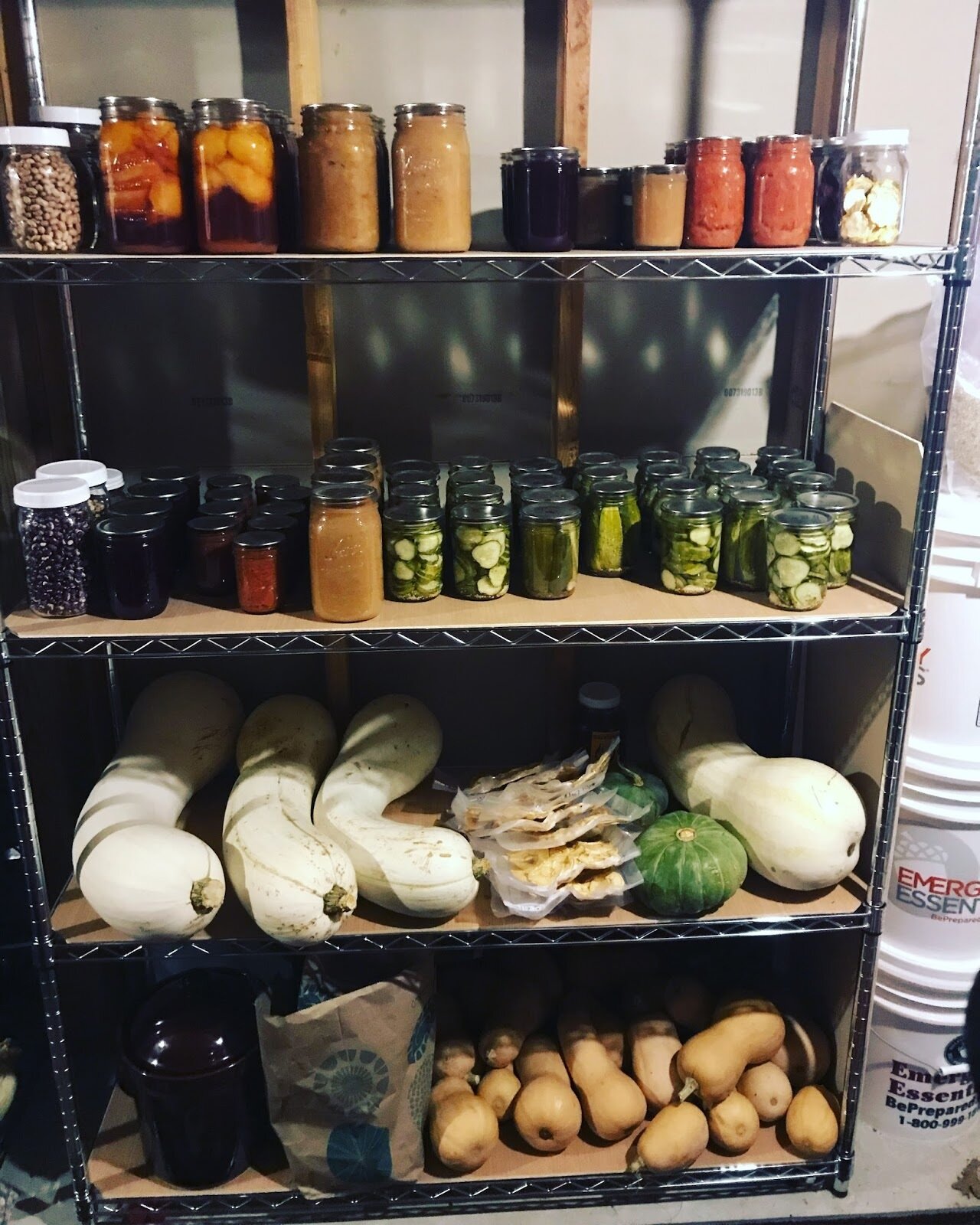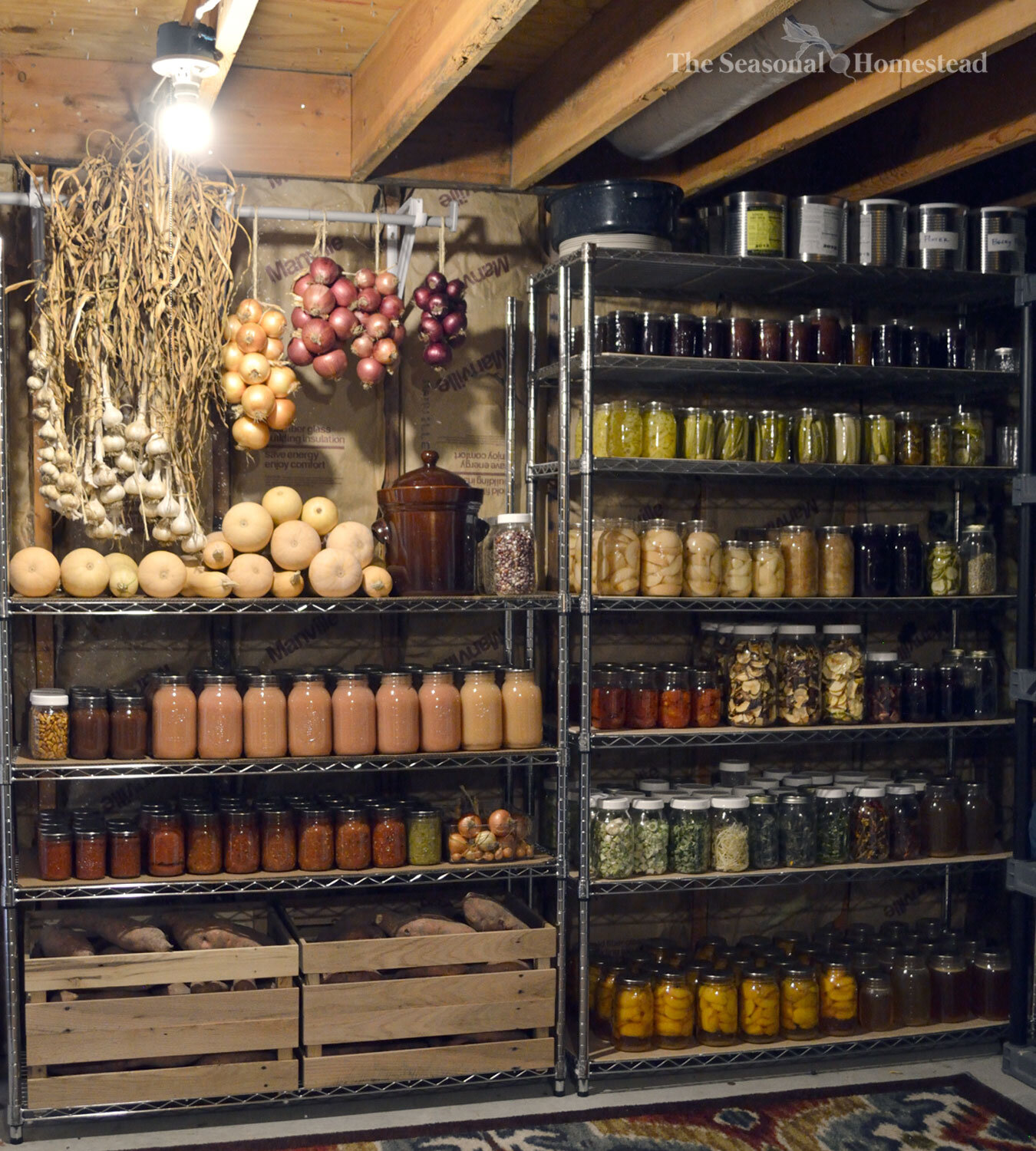What is self-sufficiency? The definition is needing no outside help in satisfying one’s basic needs, especially with regard to the production of food. Over the years, I’ve read many books and articles claiming that food self-sufficiency is possible on a quarter acre. From my own experience, I have to say I disagree.
So how much space is necessary to be self-sufficient in regards to food? I hope to enlighten you to a more reality based self-sufficient garden space needs based on experience.

My end goal is to create a homestead with 95% self-sufficiency specifically with food. I allow the extra 5% for commodities like salt, vanilla beans, olives, etc. that we would have a hard time living without.
The idea that it could be done on a quarter acre was incredibly appealing to me as I’m sure it is for others. I live on .66 acres in the suburbs and having more land wasn’t an option for us since it was cost prohibitive.
I decided I would test with just one food group and try and achieve complete self-sufficiency, rather that doing only a little bit of everything. Aiming for 100% completion on one food group is more measurable than ambiguous percentages.
I feel it necessary to note that I wasn’t doing this as a beginner. I was an experienced gardener who knew how to season extend, succession plant, interplant, and vertically grow. I’m well versed in maximizing garden space usage.

However, I knew growing 100% of our vegetables from only my backyard garden would be challenging since I had never tried it before. I soon found out I grossly underestimated the challenge of growing a year’s supply of vegetables. I didn’t realize the magnitude of how many vegetables a family (six of us) can eat over a year. It is a staggering amount and though I gave it everything I had, we still didn’t make it a whole year on just our backyard produce.
 Our 2017-2018 winter pantry from our first year of try to be vegetable self-sufficient
Our 2017-2018 winter pantry from our first year of try to be vegetable self-sufficient
I was disappointed but I don’t give up easily. Every year, I’ve become a little better at producing more but still haven’t quite reached the entire year of being self-sufficient with vegetables. We can go about 10 or 11 months with just vegetables from the garden. The goal is within reach and within the next year or two, I intend on meeting that goal.
 Our winter pantry for 2019-2020
Our winter pantry for 2019-2020
A year’s supply of fruit would be the natural next step towards food self-sufficiency. We love fruit and planted seven fruit trees (apple and pear), along with blackberries, blueberries, raspberries, and strawberries on our homestead.
In order to give a better picture of how much fruit can be produced as a home gardener, I’m going to dive into detail on the subject of fruit and space needs.

Strawberries are one fruit I have difficulty growing enough to last a year. My mature second year strawberry plants produced around 15lbs from 81 square feet. In order to have enough for the year, I need to harvest 30 pounds of strawberries for the freezer and another 20 lbs for jam. Then we eat about 15lbs fresh during the season. That’s 65 lbs total we need each year. Based on my current yield, I’d need 400 square feet just to meet the needs of strawberries.
Blackberries and blueberries are more space efficient than strawberries and we get a year’s supply of blackberries from 90 row feet. The blueberries aren’t quite producing a year’s supply and I have twelve bushes that are four years old.

My apple and pear trees are still young and haven’t produced yet so I don’t know the yield. According to this site, Mature semi dwarf trees can yield from 5-10 bushels, even if we hit the low end of 5 bushels a tree we would have plenty for a year’s supply of apples and pears- eventually.
Another consideration with fruit is most are perennials and stay in the same location all year. The permanent nature of the plant means there is no succession planting afterwards to double or triple harvests. Right now I’d say we produce about 10-20% of our year’s supply of fruit and roughly half our garden space is dedicated to growing it. Of course that percentage would change as the fruit trees start producing.
If I moved to the next step of food self-sufficiency, I would need to add on meat, grain, and a possibly a dairy source.
First a disclaimer that I don’t have experience with any of the following animals or grains except chickens. I haven’t been able to test raising meat yet because we have rules and regulations where I currently reside that don’t allow pigs, goats, cattle, or any other type of farm animal save chickens. I found references around the internet to give you my best guess as to how much space they would use. The references on the Dexter cow are from a friend who has raised them for years.

Let’s start with meat & eggs. Only a small space is needed for meat chickens so it’s no problem to get a year’s supply of chickens, 50 chickens raised on 200 square feet. Two pigs can be grown in 240 square feet. Two goats need a minimum of 500 square feet. A small beef cow like a Dexter needs a half acre of space per cow. So I couldn’t have beef on a quarter acre homestead. However, you could substitute hunting wild game like deer or elk instead of beef. I currently have 400 square feet for 15 laying hens.
How about grain?
I found an article from a home gardener who grew wheat and the yield was and estimated 40lbs per 1000 square feet. I’m using that reference instead of what a commercial farmer’s yield would be because it is more realistic to a homesteader. That means it takes 25 square feet per pound of wheat.
According to my purchase records, we’ve gone through roughly 200lbs of wheat a year. So at 25 square feet per pound yield, I would need 5000 square feet of wheat.

Then I’d need oats, buckwheat, and quinoa. I’ll do an educated guess of 2000 square feet for other grains. Corn for cornmeal would be roughly 500 square feet for 100 pounds. Then about 50 pounds of sweet corn of vegetable consumption. So another 200 square feet for that.
Just for fun, let’s do some math. Remember these are estimates and based on my own family.
A quarter acre = 10,890 square feet.
My current garden of both fruits and vegetables is roughly 4500 square feet. (remember we only produce 10% of our fruit right now)
200 square feet for 50 meat chickens
400 square feet for 15 egg layers
240 square feet for the pigs
500 square feet for the goats
=1340 square feet for animals
Then 7700 square feet for the grains
For a grand total of 13,540 square feet. That’s not too far off the quarter acre mark but when you remember how much more you would need for nut trees and more fruit, more space would be necessary. I’m also not factoring in space for a house, a shed and/or barn, walkways, and animal shelters.
At this point you may be thinking, “could an individual person be food self sufficient on a quarter acre?” And what about places like California where you can grow year round?” I’ll admit that may be a more viable option, but I personally believe you would need more than a quarter acre space if you are including all your homestead buildings and growing staple crops.
I love the example of The Urban Homestead, a farm on 1/5th of an acre in California. They have a 4350 square foot garden and produces all their vegetables and some fruit needs. However, they openly admit they don’t produce all their own food because they don’t have the space for staple crops.

My conclusion is that a food self-sufficient homestead is possible- but- it needs to be on more than a quarter acre. Spacing needs for food self-sufficiency vary based on how many people are in your family. For an individual, you would need at least a half-acre total area (this includes the home, buildings, animal shelters, and walkways) would be adequate.
For a family of four, a minimum of an acre of usable space is more in line with reasonable achievability. My point in giving a more realistic number for space required for food self-sufficiency isn’t to discourage you from trying. I’m actually aiming for the opposite effect. I hope knowing that it takes a little more space makes you feel more confident that you are getting yields that are on target.


2 comments
Your garden looks so healthy. Every time we try, we fail. We have tried several times in two different parts of the country. Either pests destroy everything or we he crops just don’t produce much. About the only thing we can consistently grow is chili peppers and cherry tomatoes. We try to do the right soil mixes m, garden boxes and the easy plants, but everything fails: beans, squash, carrots, beats, spinach, big tomatoes, potatoes half the time. Other people make it look easy. After years of failing, we decided “black thumbs” is a real thing and gave up on everything, but the herbs in pots. Funny thing is we have some tiny bonsai trees in tiny pots that have been healthy for a decade, but we can’t grow vegetables to save our lives.
That is interesting! I am the opposite. I’m not good with houseplants but much better with growing outside. I’m sorry your experiences haven’t been good. Hopefully you can take it up again someday. Maybe find a good local mentor to coach you through it?